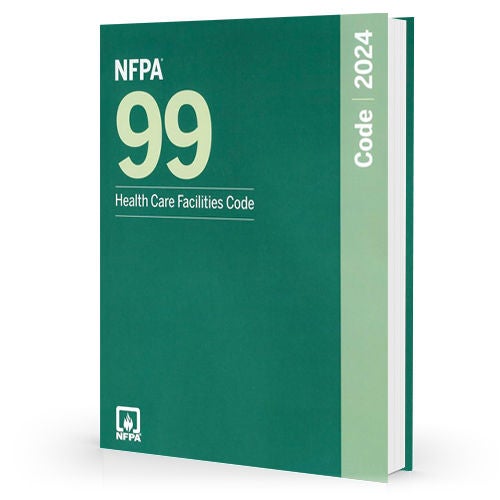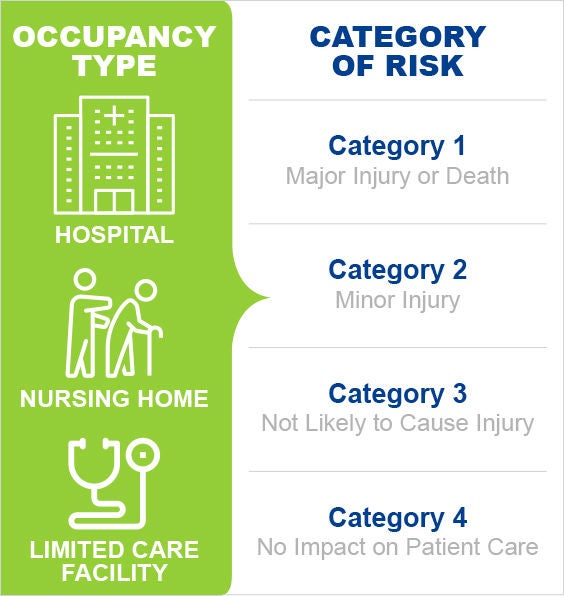A major change in NFPA 99, 2012 includes the shift to a risk-vs. occupancy-based approach. Traditional healthcare was commonly delivered through facilities such as hospitals, nursing homes, and limited care facilities. Now, medical procedures have migrated from the Hospital to Ambulatory Care Centers to Physician Offices. While the locations for these procedures are changing, the procedures aren't changing and the risks associated with those procedures aren't changing.
With these changes, code requirements are now determined by the risks associated with the procedures performed instead of a building occupancy type. And what does this mean for NFPA 99? Instead of categorizing each facility by Occupancy Type and then stating code requirements by occupancy type, NFPA 99 now defines risk categories and you assign a risk category to each facility system based upon the types of procedures that system supports.
This means we aren't defining requirements based upon the building category. Instead we are concerned about the level of risk to the patient and the caregiver if that facility system is no longer available regardless of the building category or type. It is important to note that this new risk-based approach is not limited to facility systems. It is being applied to both facility systems and patient care rooms.






